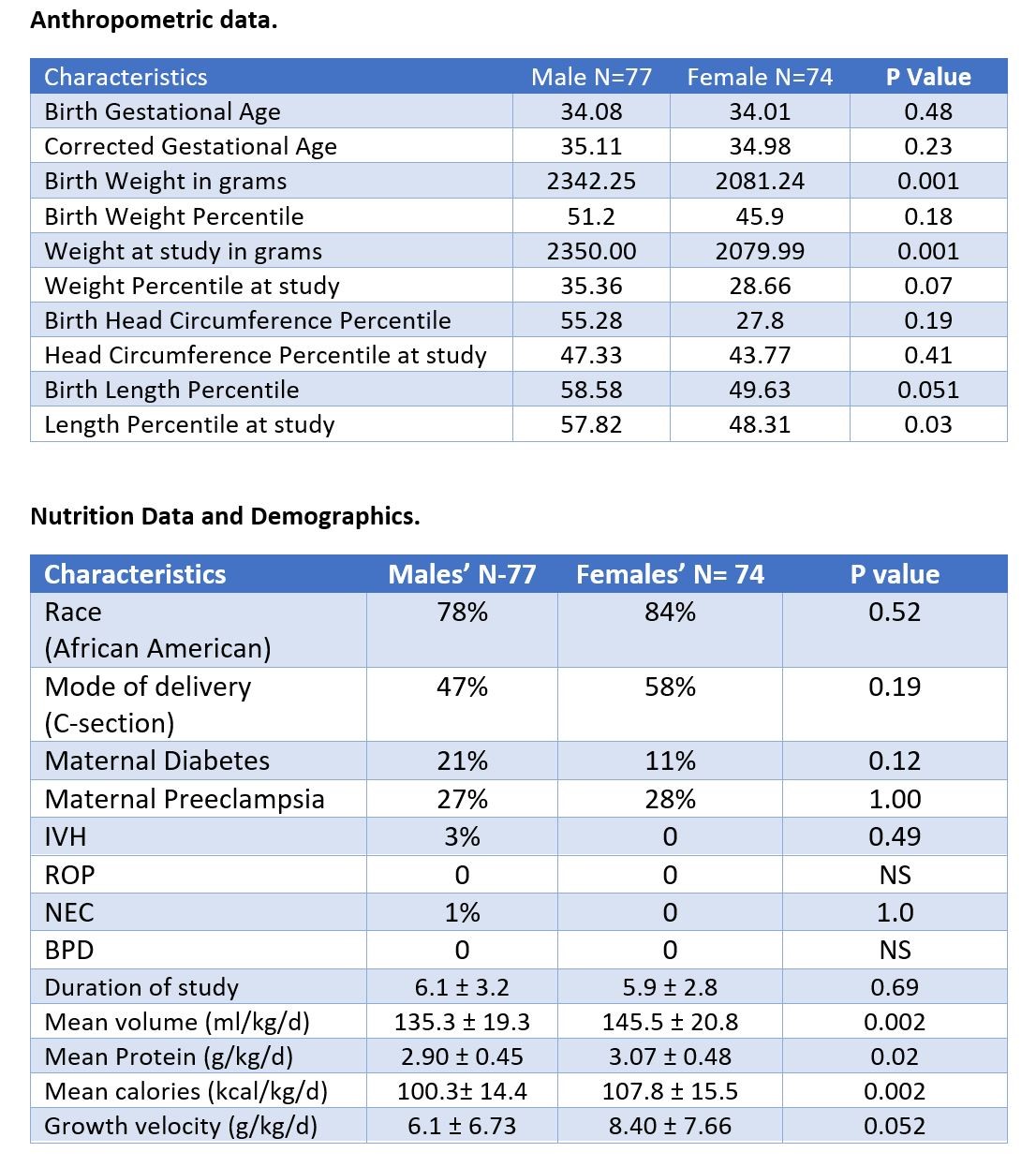Neonatal Fetal Nutrition & Metabolism
Neonatal GI Physiology & NEC 4: Gut Health, Enteral Nutrition and Oral Feeding
91 - Do Female Late Preterm Infants Consume More Formula Milk?
Saturday, April 29, 2023
3:30 PM - 6:00 PM ET
Poster Number: 91
Publication Number: 91.236
Publication Number: 91.236
Sumana Ramarao, University of Mississippi Medical Center, Madison, MS, United States; Simmy Vig, University of Mississippi School of Medicine, Jackson, MS, United States; Addie Hitt, University of Mississippi School of Medicine, Jackson, MS, United States; Radha Alur, Penn State Children's Hospital, Camp Hill, PA, United States; Pradeep Alur, University of Mississippi Medical Center, Camp Hill, PA, United States

Sumana Ramarao, MD
Assistant Professor
University of Mississippi Medical Center
Madison, Mississippi, United States
Presenting Author(s)
Background: Very preterm infants cannot regulate their enteral feeds; thus, clinicians prescribe similar amounts of calories and protein, irrespective of their sex, as tube feedings. This leads to alteration in body composition at term corrected gestational age. There are no studies in preterm infants to demonstrate the sex differences in nutritional consumption.
Objective: We studied if the volume and nutrient intakes will differ between sexes in preterm infants feeding formula ad libitum.
Design/Methods: A retrospective study of preterm infants (from 34 0/7 to 36 6/7 weeks of corrected gestation) who are spontaneously ad-lib feeding formula milk and are free of any respiratory support for at least two days. We excluded those with a short gut syndrome, severe chromosomal anomalies, or congenital heart conditions, those who are not exclusively on formula feeds and if discharged less than 3d after being on adlib feeds. Data collected: sex, gestational age, birth weight, anthropometric data at birth, at the start of the study, and at the end of the study, maternal data, nutritional intake: mean volume (ml/kg/d), mean protein (g/kg/d), and mean calories intake (kcal/kg/d) during the study period, and any neonatal morbidity. We needed total N=170 for inclusion in the study after assuming an equal standard deviation of the volume of intake of formula equal to 14 ml/kg/d and an alpha of 0.05, and an 80% power to detect a 6 ml/kg/d volume of intake difference between male and female infants. Independent sample t-test with a priori significance of < 0.05 was used for continuous variables, and chi-square test for categorical variables.
Results: We included 85 female and 85 male preterm infants, of those we evaluated 151 appropriate for gestational age (AGA) infants. Tables show anthropometric data, demographics, and nutritional data of AGA infants. The birth weight percentiles were not different between the sexes. Mean volume, protein & calorie intake was significantly higher in female infants than in male infants. Growth velocity was higher in female infants, 8.40 ± 7.66 vs. 6.1 ± 6.73 in males (p=0.05). Mean ad-lib feeding duration was not different between the sexes.
Conclusion(s): This is the first study in late preterm infants showing the sex differences in formula milk consumption. AGA female preterm infants consumed more volume, protein, and calories than AGA male preterm infants. Higher fat deposition or higher growth velocity in female preterm infants may play a role. Future sex-specific nutrition studies in very early preterm infants are urgently needed to understand & promote optimal body composition.

